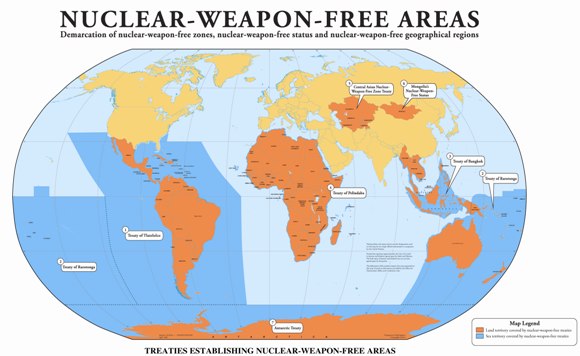Similar to the Nuclear Non-Proliferation Treaty, five Treaties on regional Nuclear-Weapons-Free-Zones require parties to conclude a comprehensive safeguards agreement with the IAEA. These Treaties cover Latin America and the Caribbean, the South Pacific, Southeast Asia, Africa and Central Asia.
Nuclear-Weapon-Free-Zones
The NPT explicitly refers to the right of any group of States to conclude regional treaties to assure “the total absence of nuclear weapons in their respective territories.” Such regional Nuclear-Weapon-Free Zones help strengthen global nuclear non-proliferation and consolidate international efforts towards peace and security.
There are five Treaties on regional Nuclear-Weapons-Free-Zones that require its parties to conclude a comprehensive safeguards agreement with the IAEA:
- Treaty for the Prohibition of Nuclear Weapons in Latin America and the Caribbean (Treaty of Tlatelolco, 1967)
- South Pacific Nuclear Free Zone Treaty (Treaty of Rarotonga, 1985)
- Treaty on the Southeast Asia Nuclear Weapon-Free Zone (Treaty of Bangkok, 1995)
- African Nuclear-Weapon-Free Zone Treaty (Treaty of Pelindaba, 1996)
- Treaty on a Nuclear-Weapon-Free Zone in Central Asia (Treaty of Semipalatinsk, 2006)




